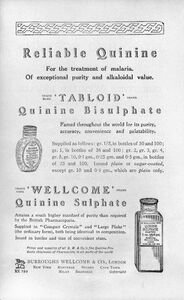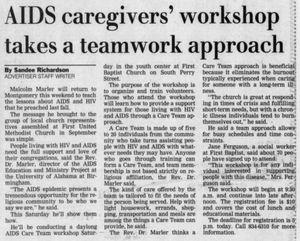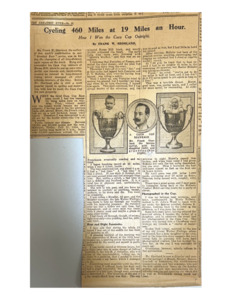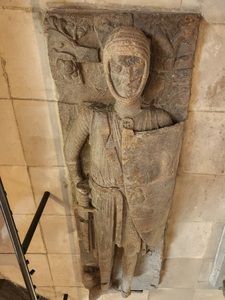
Browse Items (255 total)
Sort by:
-
Advertisement for quinine treatments for malaria.
An advertisement for two different quinine treatments for malaria; quinine bisulphate and quinine sulphate. Marketed as of "exceptional purity". -
Bust of Sir Hans Sloane in the British Library
This is a photo of the Bust of Sir Hans Sloane in the British Library. This is a replica of Sir Sloane's bust in the British Museum by Rysbrack. This bust is in the library because of Sir Sloane's contributions to the library. -
AIDS Caregivers Workshop
An article about AIDS Caregiving Workshops in the Montgomery Advertiser. It focuses on Malcolm Marler and the programs he ran through the 1917 AIDS Clinic at UAB. -
Cunningham hall.
Cunningham Hall, the college women’s residence on the Oakwood campus, is named in Eugenia I. Cunningham’s honor. Mrs. Eugenia Isabella Cunningham, who served on the staff of Oakwood College and was widely known as Mother Cunningham, died on June 20, 1963, at the Riverside Hospital in Nashville, Tennessee. -
Down Street Station
Map location of Down Street Station -
Cycling 460 Miles at 19 Miles an Hour
This is an article from an unknown magazine or newspaper which is authored by Frank Shorland and is about how me won the Cuca Cocoa Challenge Cup. -
Portrait of Sir Christopher Wren.
At the National Portrait Gallery, there is a painting of Sir Christopher Wren. Wren was the King's Surveyor of Works following the Great Fire of 1666. He was heavily involved in the rebuilding of 51 parishes in London after the fire. -
King John Magna Carta of 1215
There are many different versions of the Magna Carta. This is version is the first ever version, signed by King John in Runnymede in 1215. William Marshal had significant influence in the signing of this version. -
Temple Church in London
Temple Church was opened in 1185, and became the stronghold of the Knights Templar order in England. Today it serves as the final resting place for William Marshal alongside notable Templar leaders. Most of the building remains as it was in the 12th century with significant restoration taking place after "The Blitz" in World War II. -
Effigy Tomb of William Marshal
William Marshal, first earl of Pembroke, died in 1219 as King regent. Subsequently, because of his commitment to the Templers cause in the Holy Land, and his loyalty to the English royal family, he was buried in Temple Church with great honor. His effigy tomb, despite being partially destroyed during "The Blitz," remains untouched in Temple Church.








